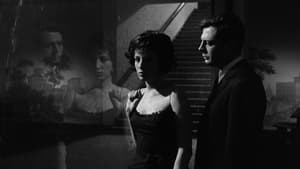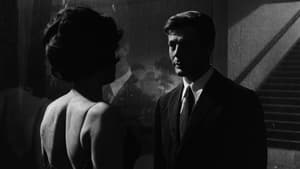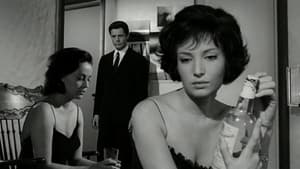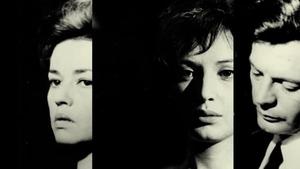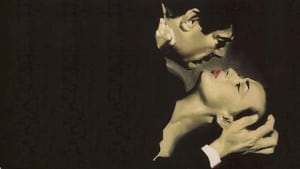Contact: [email protected]
Video Sources 0 Views

Synopsis
[ez-toc]




Introduction
In the vast landscape of old classics, few films stand the test of time as gracefully as “La Notte Colorized,” a 1961 masterpiece directed by the visionary Michelangelo Antonioni. As the film industry continues to evolve, a controversial yet intriguing trend has emerged—colorizing old movies. In this article, we delve into the mesmerizing world of “La Notte Colorized 1961,” exploring the film’s rich history, the controversies surrounding colorization, the transformative vision of Antonioni, and the delicate balance between preserving cinematic heritage and embracing new visual experiences.
Read Media File Transfer Agreement: Terms and Conditions
Read FAQ
The History and Controversies of Colorization in Film Industry
Before we embark on the journey of “La Notte Colorized 1961,” it’s crucial to understand the historical context and controversies surrounding the colorization of old films. Colorization, the process of adding color to black and white movies, emerged as an attempt to breathe new life into classics, making them more accessible to contemporary audiences. However, this practice sparked heated debates within the film industry, with purists arguing that it compromises the artistic integrity of the original works.
Despite the controversies, colorization has been a persistent force, driven by the desire to introduce classic films to a new generation. “La Notte Colorized 1961” joins this movement, offering audiences an alternative way to experience the emotional depth and complexity of Antonioni’s masterpiece.
Examining “La Notte Colorized” Through Different Lens: Original vs. Colorized Version
To fully appreciate the impact of colorization on “La Notte Colorized” we must first revisit the film’s original black and white version. The plot revolves around the deteriorating relationship between Giovanni Pontano, played by Marcello Mastroianni, and his wife Lidia, portrayed by Jeanne Moreau. Monica Vitti adds a captivating layer to the narrative as Valentina Gherardini, a woman who becomes entwined with the couple over the course of one night.
The original version, known for its stark contrasts and evocative cinematography, captures the emotional nuances of the characters amidst the backdrop of Antonioni’s modernist vision. In contrast, the colorized edition introduces a vibrant palette, breathing new life into the film. The artistic choices made in colorization enhance certain aspects of the narrative while potentially altering the intended impact of the original black and white cinematography.
A visual comparison between select scenes from the two versions allows viewers to discern the differences in tone, mood, and overall aesthetic. The colorized edition infuses warmth into the cold urban landscape, but purists may argue that it dilutes Antonioni’s original intent. This debate raises intriguing questions about the balance between modernizing classics for contemporary audiences and preserving the authenticity of the filmmaker’s vision.
The Visionary Filmmaking of Michelangelo Antonioni
To understand the significance of “La Notte,” we must delve into the visionary filmmaking of Michelangelo Antonioni. Known for his distinctive cinematic style, Antonioni crafted films that challenged traditional storytelling conventions. “La Notte” is a key component of Antonioni’s filmography, displaying thematic continuity with works like “L’Aventura” and “L’Eclisse.”
Antonioni’s directorial style involves a meticulous exploration of the human psyche against the backdrop of urban landscapes. “La Notte” epitomizes this approach, delving into the complexities of relationships and the existential angst of its characters. The colorized version seeks to amplify Antonioni’s vision, inviting audiences to experience the emotional depth of the narrative in a new, visually engaging way.
Capturing Emotions in Shades: Character Analysis
The heart of “La Notte Colorized” lies in the exceptional performances of its cast. Marcello Mastroianni’s portrayal of Giovanni is a masterclass in subtlety and nuance, capturing the character’s internal turmoil. Jeanne Moreau’s Lidia exudes a mix of vulnerability and strength as she grapples with the unraveling threads of her marriage. Monica Vitti’s Valentina adds a mysterious and alluring dimension to the narrative.
In the colorized version, these performances are brought to life with a new vibrancy. The emotional journey of the characters becomes more pronounced as their interactions unfold in a spectrum of colors. While some may argue that the original black and white version provides a more authentic and raw experience, the colorized edition invites viewers to connect with the characters on a different level, emphasizing the evolving nature of cinematic storytelling.
The Significance of “La Notte Colorized” in Film History
“La Notte Colorized” is not merely a film; it is a reflection of its time and a testament to Antonioni’s ability to capture the zeitgeist. Exploring modernist themes and societal changes, the film resonated with audiences and critics alike. Its significance in film history is underscored by the accolades it received, including the prestigious Golden Bear at the Berlin International Film Festival.
The colorized version of “La Notte Colorized” adds a layer of accessibility to this cinematic gem. As it reaches a new audience, the film continues to contribute to discussions about the evolution of storytelling and the enduring relevance of Antonioni’s work. The juxtaposition of the original and colorized versions highlights the film’s adaptability, showcasing its timeless exploration of human relationships amidst societal shifts.
Reviving Old Classics: The Pros and Cons of Colorization
The decision to colorize classic films raises important questions about viewer engagement and artistic integrity. On one hand, colorization attracts new audiences who may find black and white films less accessible or engaging. The infusion of color can breathe new life into these classics, making them visually appealing to contemporary sensibilities.
However, the challenge lies in striking a balance between preserving the original artistic integrity and presenting a refreshed visual experience. Some argue that colorization can enhance the emotional impact of a film, while purists advocate for the preservation of the filmmaker’s intended vision. As “La Notte Colorized 1961” navigates this delicate balance, it prompts audiences to contemplate the evolving nature of cinematic storytelling.
Preserving and Celebrating Film Heritage
Beyond colorization, the preservation of film heritage involves a comprehensive approach. While colorization aims to make old classics more accessible, it is crucial to recognize the importance of other preservation techniques. Film restoration, digitization, and archiving play integral roles in safeguarding the rich tapestry of cinematic history.
Advocating for the celebration of film heritage goes beyond the debate of colorization. It involves creating awareness about the value of preserving original prints, supporting restoration efforts, and fostering an appreciation for the diverse cinematic experiences that span different eras and genres. “La Notte Colorized 1961” serves as a catalyst for broader conversations about the multifaceted aspects of film preservation.
Conclusion
In the evolving landscape of cinema, “La Notte Colorized 1961” emerges as a captivating intersection of old classics and modern visual storytelling. The film’s journey from black and white to colorized opens a dialogue about the preservation of cinematic heritage and the delicate balance between honoring the past and embracing the future.
As viewers embark on this dual cinematic experience, it is essential to appreciate both the original black and white version and the colorized edition as distinct contributions to the legacy of “La Notte.” The film not only stands as a testament to Antonioni’s brilliance but also invites a new generation to explore the emotional complexities of a bygone era.
In the future of colorization, as technology advances and artistic choices continue to evolve, “La Notte Colorized 1961” remains a beacon, sparking conversations about the dynamic nature of cinema and its ability to transcend time. Whether experienced in the classic monochrome tones or the vibrant hues of colorization, “La Notte” endures, inviting audiences to witness the beauty of storytelling in all its nuanced forms.
